With modern servers, there is a race to replace capacity hard drives with flash storage. There are a huge number of hard drives still being used as primary storage in functions like video CDN nodes. Now, with drives like the Micron 6500 ION, we have large read-focused NVMe SSDs designed to offer more performance and capacity per U than storage. In the past, SSDs have been focused solely on the performance metric. With 30.72TB 2.5″ SSDs, NVMe storage can be denser than hard drives as well. Given that background, let us take a look at Micron’s newest density play.
Micron 6500 ION 30.72TB
The Mciron 6500 ION comes in a number of different NVMe form factors. Here we have a U.3 2.5″ PCIe Gen4 NVMe SSD.
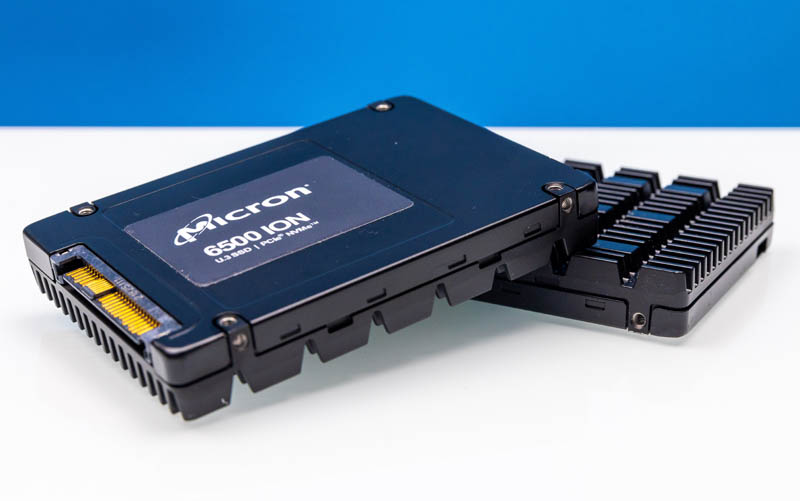
That 2.5″ form factor means we review 1U and 2U servers with 12 front hot-swappable drives per U or 368.64TB/ U without needing a special storage chassis. In contrast, one can fit 4x 3.5″ drives on the front of a 1U or 12x 3.5″ drives on the front of a 2U server. Even if there were easy to procure 30TB hard drives today, they would at best offer a third to half of the density of the SSDs. Of course, the SSDs are higher speed, cost, and power consumption, but that density play is what Micron is looking at.
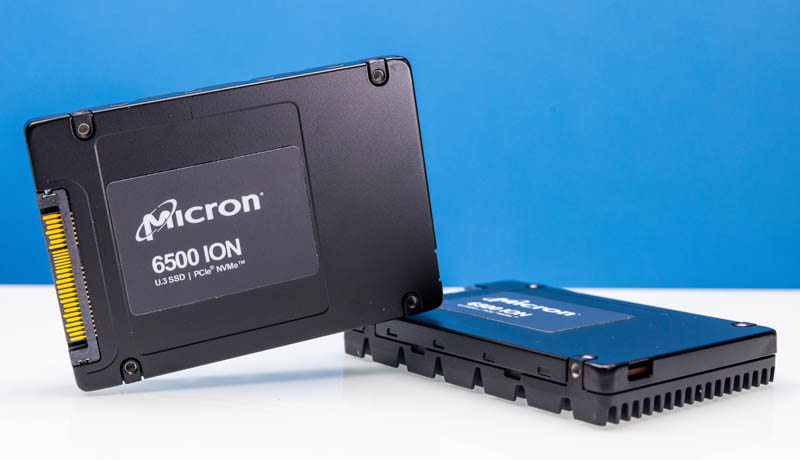
One of the first things that we notice is that the chassis is taking advantage of one of the more recent trends where SSDs, even capacity/ value drives, have shed smooth chassis exteriors and instead have heatsink fins for better cooling.
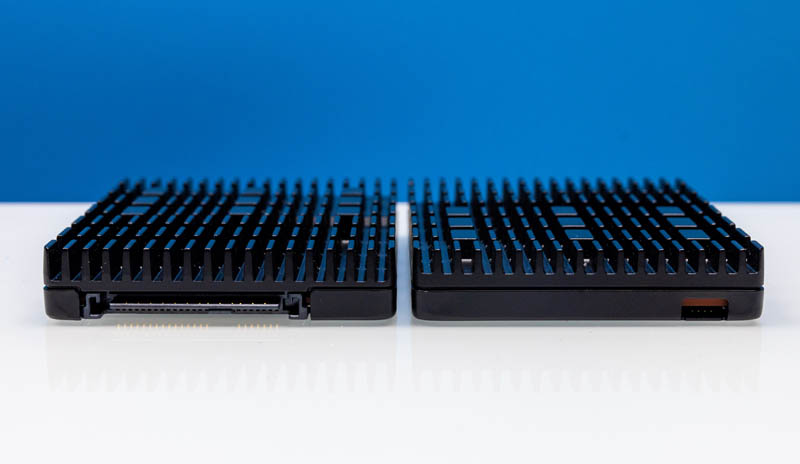
We are just going to quickly note that Micron sent the review samples in a hard case with foam. They are still focused on QLC and TLC terms while major OEMs have changed to simply classifying drives as read-intensive, write-intensive, and mixed when selling them.
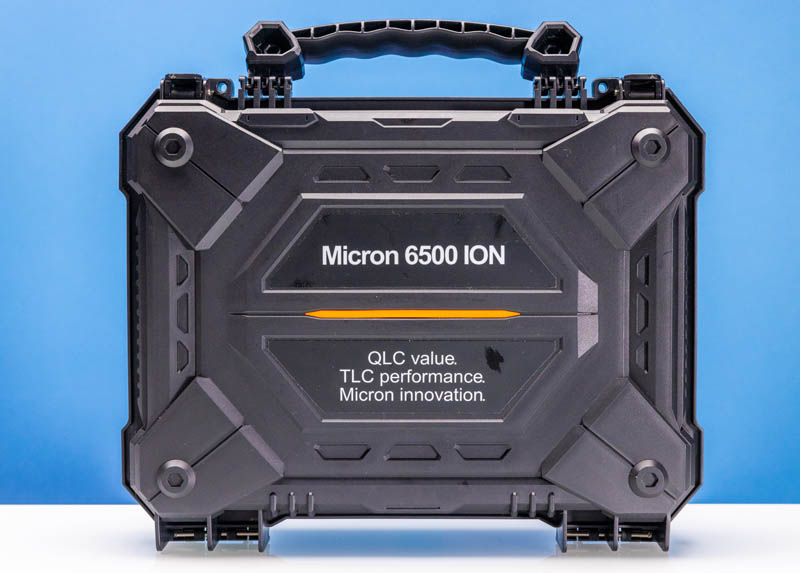
Here is a quick spec sheet for the 30.72TB SSD. Something that we wanted to quickly point out is that endurance is becoming an odd metric. There are few folks doing 4K random writes to drives 24×7 with no reads and no larger/ sequential writes. If you are doing that, then the Optane P5800X or the DapuStor Xlenstor2 X2900P we reviewed are better options. When we think of a 30TB+ SSD, these are hard drive replacement devices so they will be ingesting data less frequently than serving data to clients. 9TB per day feels like a lot for a device like this.
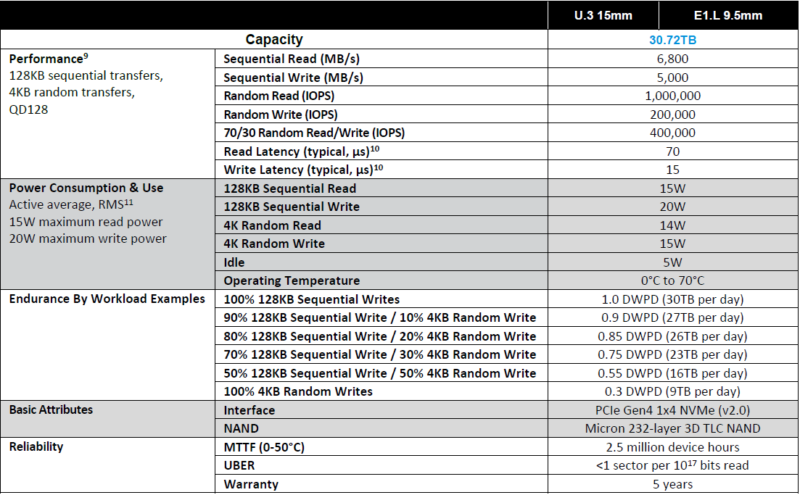
In any case, let us take a look at the performance.

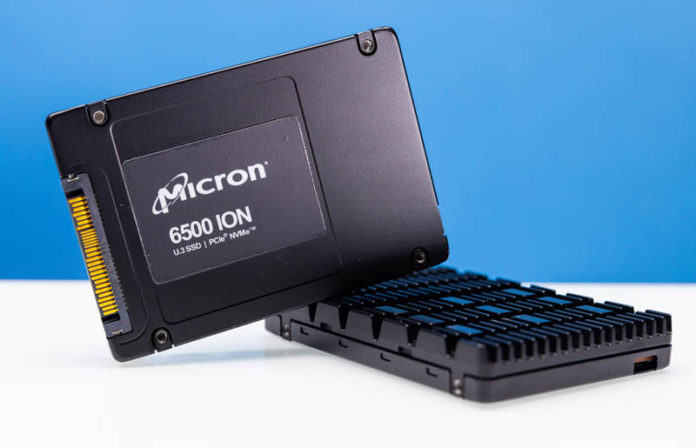



Does page 2 contain a left-over cloned heading from an earlier review?
Solidigm D5-P5430 15.36TB Performance
Yeah, the E1.S and U.3 have a slight speed and throughput benefit over m.2 NVMe, but the fact that QLC is advertised for servers is abominable. I wouldn’t even put TLC in one. I don’t know, can’t people do simple math anymore?
My first experience with QLC was with a pair of Solidigm P41 Plus drives. I figured the heritage of the parentage would count for something. It did not. Drives were returned. So inconsistent they might as well have been faulty.
@namer
As a server admin I would happily use these as the capacity drives in a vSAN array. TLC are just fine as well. In fact aot of the top drives in servers are TCL. You just have to look at use case and go from there.
Na
Ok tcl
Ummm